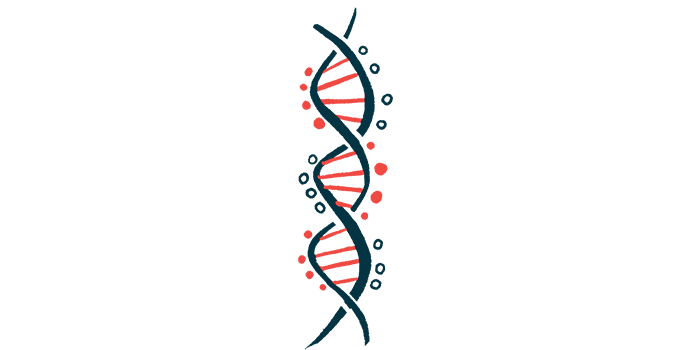UCLA team developing one-time, inhalable CF gene-editing treatment
Therapy aims to correct underlying mutations that cause cystic fibrosis
Written by |

Researchers at the University of California, Los Angeles (UCLA) are developing a gene-editing therapy — designed to be delivered as a one-time inhalable treatment — that aims to correct the underlying mutations that cause cystic fibrosis (CF).
The team is using tiny fat-based particles to deliver the gene-editing machinery to lung stem cells, where, they believe, gene correction could be permanent. The treatment, according to a university news story, could offer hope to people with the genetic disease who do not benefit from current therapies.
CF is caused by mutations in the CFTR gene, which normally produces a protein of the same name. This CFTR protein helps regulate the flow of water and salt molecules in and out of certain cells, which is essential for the production of mucus. In CF, missing or dysfunctional CFTR instead results in the accumulation of thick and sticky mucus in several organs, particularly the lungs. This, in turn, leads to symptoms like shortness of breath, cough, and frequent lung infections.
Now available CFTR modulators are a modern class of treatment that have significantly improved clinical outcomes in CF. However, they bind to specific faulty versions of the CFTR protein and, thus, only work when there is some protein being produced. CF patients with null mutations produce no protein at all and can achieve no benefit with these therapies.
Donald Kohn, MD, a distinguished professor of microbiology, immunology, and molecular genetics at UCLA, is working with collaborators to develop different gene-editing strategies that would actually correct the mutations that cause CF.
“If you think of a sentence with 50 letters, any letter that’s out of place will make the sentence nonsense,” Kohn said. “We’re moving forward with two approaches — fixing all the letters that are out of place by adding in a normal CFTR gene to override the inactive gene and developing methods to fix each of these mutations individually. We’ll then evaluate what’s most effective.”
Targeted gene editing aims to deliver treatment to ‘the right ZIP code’
Delivering targeted therapies to cells in the lungs can be challenging, the team noted.
“It’s like trying to get into Fort Knox,” said Kohn, a gene therapy expert. “There are multiple barriers — thick mucus, inflammation, and the cells’ location at the bottom of the airway.”
To overcome these issues, the team members combine their expertise in gene therapy, lung disease, and nanotechnology. Their goal is to target lung stem cells with a one-time inhalable mist.
Think of it like an Amazon delivery. … Our nanoparticles are the packaging that helps transport the gene-editing machinery while shielding it from the body’s defenses.
Brigitte Gomperts, MD, a professor of pediatrics and pulmonary medicine at UCLA, is the team’s lung disease specialist. Her area of expertise is stem cells in the airway.
“These are the cells that continuously renew and generate the specialized cells responsible for keeping mucus hydrated and the airways clear,” Gomperts said.
For his part, Steven Jonas, MD, PhD, is working with his team to make sure the gene editing machinery reaches the lung stem cells. The researchers are using tiny carriers called lipid nanoparticles — Jonas’ speciality — for that purpose.
“Think of it like an Amazon delivery,” said Jonas, also a researcher at UCLA. “Our nanoparticles are the packaging that helps transport the gene-editing machinery while shielding it from the body’s defenses.”
Ruby Sims, a postdoctoral scholar in Jonas’ lab, noted that it’s not as simple as “just … dropping off a package anywhere in the lungs.”
Instead, Sims said: “We need to deliver it to the right ZIP code, the right street, the right house. That’s what our nanoparticles are engineered to do.”
The collaborative project was funded through UCLA’s Innovation Awards Program, which aims to fund projects with a potential impact on regenerative and stem cell medicine. Promising initial results have led to additional funding from the California Institute for Regenerative Medicine, the Cystic Fibrosis Research Institute, and the Cystic Fibrosis Foundation, the team noted.







